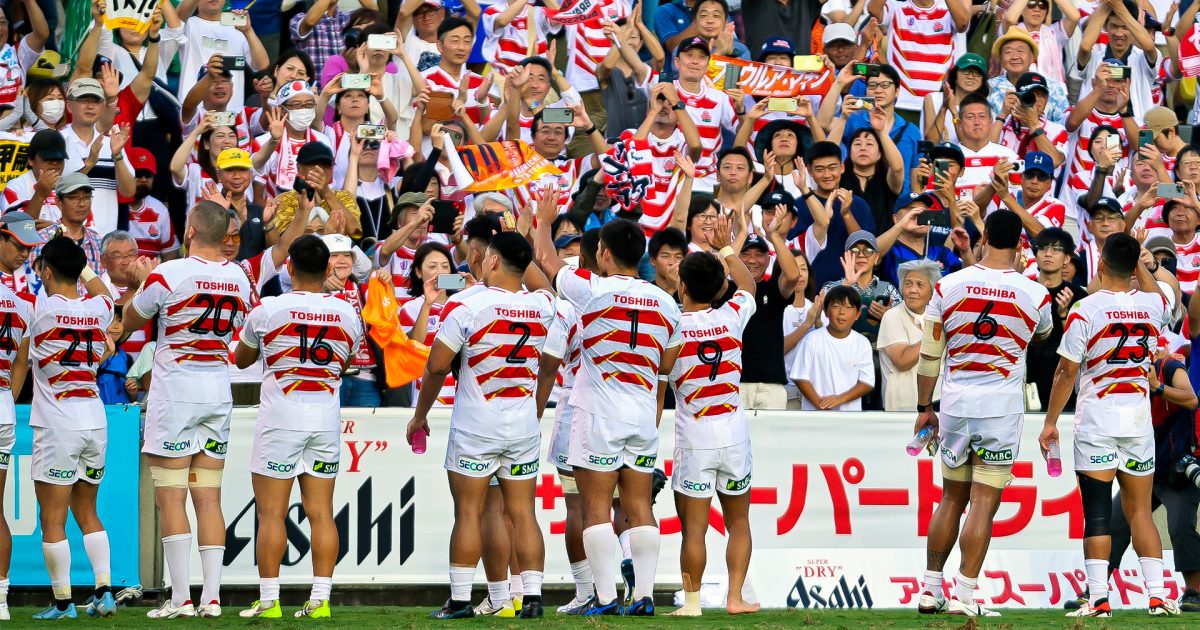
How a prince and a WW2 U.S. military seizure created the PNC knockout venues

The Pacific Nations Cup final round is currently taking place in Japan. The 5th and 6th-place playoff and semifinals were held at Prince Chichibu Memorial Rugby Stadium, while the final and 3rd-place playoff will take place at Hanazono Rugby Stadium.
Both are iconic rugby venues, deeply rooted in Japan’s history, and fitting stages for deciding the tournament’s champion.
Japanese rugby has long had a close connection with the Imperial Family. Currently, the honorary president of the Japan Rugby Football Union is Her Imperial Highness Princess Akiko. A known rugby enthusiast, she has attended both the 2019 and 2023 Rugby World Cups.
Prince Chichibu Memorial Rugby Stadium is named after Prince Yasuhito Chichibu (1902–1953), brother of Emperor Showa, who had a profound interest in sports, particularly rugby.
For those unfamiliar with the sport, they might assume the stadium is located in Chichibu City, Saitama Prefecture. However, it is not in Chichibu City, which is 90 kilometres from Tokyo Station, but in Minato Ward, just a 15-minute subway ride from Tokyo Station.
The stadium’s origins are tied to the efforts of rugby club alumni from various universities.
In 1945, after Japan’s defeat in World War II, the Meiji Jingu Stadium, previously used for rugby, was seized by the U.S. military, making it unavailable for the sport.
Determined to build their own rugby stadium, rugby club alumni scoured the area for land and eventually secured the current site. To fund the project, they sold personal belongings, including watches and valuables, and even participated in the construction themselves.
There is a famous anecdote about Prince Chichibu visiting the construction site in boots to offer encouragement and even lowering his head to the construction company, saying, quote: “The rugby community lacks funds, but we need your help.”
In 1947, the stadium was completed and originally named ‘Tokyo Rugby Stadium’. However, following Prince Chichibu’s passing in 1953, it was renamed in his honour, becoming the ‘Prince Chichibu Memorial Rugby Stadium’ we know today.
Hanazono Rugby Stadium in Osaka also owes its origins to Prince Chichibu. In October 1928, while en route to visit the Kashihara Shrine in Nara, where the first emperor of Japan is enshrined, Prince Chichibu passed through the area where Hanazono Rugby Stadium now stands.
Noticing the available land, he suggested to a railway company executive accompanying him that they consider building a rugby stadium. This suggestion led to the stadium’s construction later that year, and in 1929, it officially opened with the prince and his wife attending the opening ceremony.
Over the years, Hanazono has become synonymous not only with matches involving Japan’s national team, corporate teams, and university matches but also with the national high school rugby tournament.
Many players in Japan begin playing rugby in high school, and almost every high school player dreams of competing at Hanazono. It remains a special place for Japanese rugby players.
Both Prince Chichibu Memorial Rugby Stadium and Hanazono Rugby Stadium, which have long supported Japanese rugby, are undergoing changes.
Prince Chichibu Memorial Rugby Stadium, having aged significantly, is slated for redevelopment as part of a larger area renewal project. Plans announced two years ago include swapping locations with the neighbouring Jingu Stadium and building a new, state-of-the-art all-weather stadium with a retractable roof, featuring artificial turf.
The new stadium will have seven above-ground floors and one underground level, with a seating capacity of 15,500, about 10,000 fewer than the current stadium. Similar to the U Arena in Paris, it will also host concerts and other events. Originally scheduled for completion at the end of 2027, the project has faced delays due to a ‘Heritage Alert’ issued by the UNESCO advisory body, ICOMOS, concerning the planned tree removal in the area.
There are concerns that turning the venue into an indoor stadium could detract from its traditional rugby atmosphere. Due to the prime urban location, political interests also complicate efforts to preserve the venue as a rugby-only stadium. One wonders what the rugby alumni, who worked tirelessly to secure the land after the war, would think of these developments.
Hanazono Rugby Stadium, owned for many years by the Kintetsu Railway Company, was transferred to Higashi-Osaka City in 2015 due to high maintenance costs. The stadium’s name was changed from Kintetsu Hanazono Rugby Stadium’ to ‘Higashi-Osaka City Hanazono Rugby Stadium’.
However, Kintetsu has continued to provide strong support to its rugby team, Kintetsu Liners, which was founded in 1929, the same year the stadium opened.
The Kintetsu Liners enjoyed a golden era from the 1950s to the early 1970s. After being relegated to Division 2 last season, the team is aiming to return to Division 1 this season. The team currently boasts notable players, including
former Australia internationals Will Genia and Quade Cooper, and recently added New Zealand international Akira Ioane to the squad list.
Higashi-Osaka City has also embraced rugby as part of its community revitalization efforts, successfully hosting a Rugby World Cup match during Japan’s 2019 tournament. The city declared September 22, the date of the Italy vs. Namibia match in the World Cup, as ‘Hanazono Rugby Day’ marking an annual celebration of the sport.
The Pacific Nations Cup final will take place the day before, on September 21, at this historic venue to decide which team will raise the championship cup.






























Thanks for the history lesson.